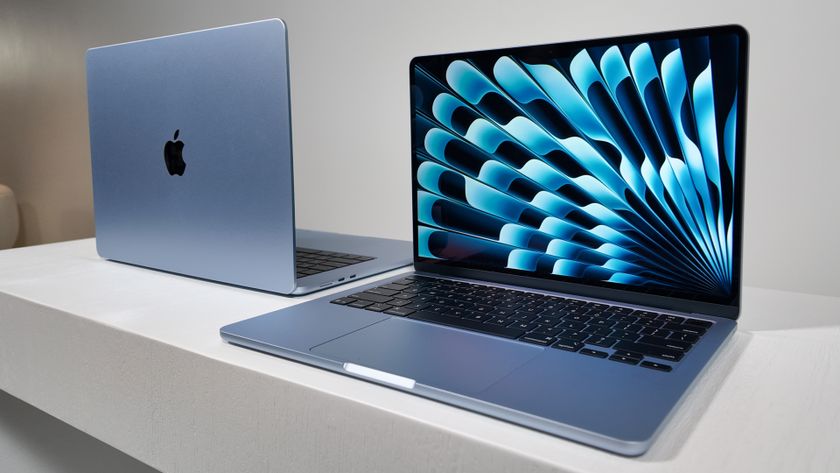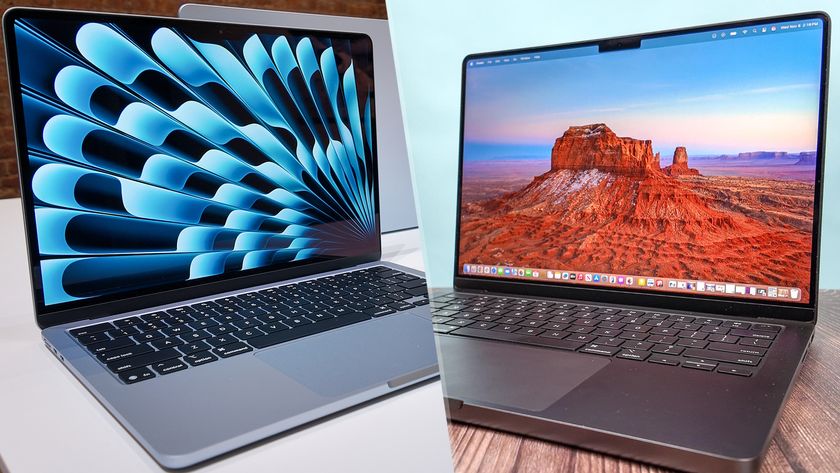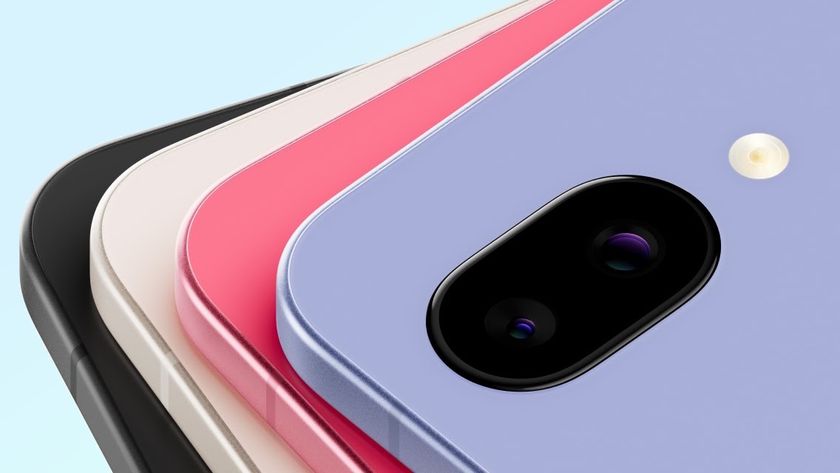Microsoft Surface Pro 9 Intel vs ARM benchmarks: This is a huge difference
There's a clear winner

This year’s Microsoft Surface Pro 9 comes in two flavors: one with an Intel 12th gen CPU and another with a Microsoft SQ3 ARM processor. The latter model also offers 5G connectivity, which is a first for the Surface line.
As demonstrated during the Microsoft Surface event, the SQ3’s Neural Processing Unit (NPU) has advanced audio and video features meant to make video conferencing with others a smoother experience. For instance, this feature intelligently eliminates loud background noises when someone is speaking. Another feature makes it appear as if you or whoever is on the call is looking at the front-facing camera.
Our full Surface Pro 9 is pending but we have run our lab has run benchmarks on both the Intel and ARM version of Microsoft’s flagship product. As you’ll see below, the two machines differ in very significant and important ways.
Note that Microsoft sent us a higher-end $1,599 configuration of the Intel Surface Pro with a Core i7-1255U CPU, 16GB of RAM and 256GB of storage, as opposed to the entry-level $999 model with a Core i5 processor, 8GB of RAM and 128GB of storage.
As for the ARM version, we were sent a $1,899 configuration with 16GB of RAM and 512GB of storage instead of the entry-level $1,299 model with 8GB of RAM and 128GB of SSD storage.
Let's check out the results.
Microsoft Surface Pro 9: Intel vs ARM specs
| Header Cell - Column 0 | Surface Pro 9 (Intel) | Surface Pro 9 (ARM) |
|---|---|---|
| Price | $999 (starting) | $1,299 (starting) |
| CPU | 12th gen Intel Core | Microsoft SQ3 |
| Graphics | Intel Iris Xe Graphics | Adreno 8CX Gen 3 |
| Display | 13-inch (2880 X 1920) PixelSense Flow Display | 13-inch (2880 X 1920) PixelSense Flow Display |
| Memory | 8GB - 32GB (LPDDR5 RAM) | 8GB or 16GB (LPDDR4x RAM) |
| Storage | 128GB - 1TB | 128GB - 512GB |
| Ports | 2 Thunderbolt 4/USB-C ports, 1 Surface Connect port, 1 Surface Keyboard port | 2 USB-C ports, 1 Surface Connect port, 1 Surface Keyboard port, 1 nano SIM slot |
| Size | 11.3 x 8.2 x 0.37 inches | 11.3 x 8.2 x 0.37 inches |
| Weight | 1.94 pounds | 1.95 pounds |
Surface Pro 9 Intel vs ARM benchmarks: Geekbench
| Header Cell - Column 0 | Surface Pro 9 (Intel) | Surface Pro 9 (ARM) |
|---|---|---|
| Single Core | 1,633 | 1,125 |
| Multi Core | 8,541 | 5,849 |
On Geekbench 5.4, which measures overall performance, the Intel Surface Pro 9 scored 1,633 on the single-core portion of the test and 8,541 on the multi-core. In comparison, the ARM Surface Pro 9 scored 1,125 on single-core and 5,849 on multi-core.
The numbers speak for themselves — the Surface Pro 9 with Intel absolutely crushes the ARM version on both the single and multi-core portions of the Geekbench 5.4 benchmark test. We're talking about a 45% jump in single-core for Intel and 46% for multi-core.
Surface Pro 9 Intel vs ARM benchmarks: Handbrake (video transcoding)
| Header Cell - Column 0 | Surface Pro 9 (Intel) | Surface Pro 9 (ARM) |
|---|---|---|
| Time (min:sec) | 9:34 | 12:58 |
The Surface Pro 9 transcoded a 4K video to 1080p using Handbrake in 9 minutes and 34 seconds. This is using a 6.5GB file.
Conversely, the ARM version took 12 minutes and 58 seconds to complete the same task natively. That's a pretty big time difference of about 2.5 minutes.
Surface Pro 9 Intel vs ARM benchmarks: Gaming
| Header Cell - Column 0 | Surface Pro 9 (Intel) | Surface Pro 9 (ARM) |
|---|---|---|
| Sid Meier's Civ 6: Gathering Storm (in frames per second) | 24.1 fps @ 1080p | 14.3 fps @ 1080p |
On Surface Pro 9 (Intel), Sid Meier's Civilization VI: Gathering Storm averaged 24 frames per second at 1080p resolution and an even worse 17 fps at 1920p. Those are terrible results if you’re a gamer. However, when compared to the SQ3’s abysmal 14 and 11 frames per second (respectively), the Intel version is the clear winner.
Outside of perhaps browser-based titles, I wouldn't recommend natively gaming on any of these Surface Pro 9s. You’re better off using game streaming services like Xbox Game Pass and GeForce Now.
Surface Pro 9 Intel vs ARM benchmarks: Battery life
| Header Cell - Column 0 | Surface Pro 9 (Intel) | Surface Pro 9 (ARM) |
|---|---|---|
| Time (min:sec) | 9:50 | 11:17 |
On our battery test, which involves continuous web surfing over Wi-Fi at 150 nits of brightness, the Surface Pro 9 lasted for 9 hours and 50 minutes. That isn’t exactly spectacular, but it’s slightly above the Surface Pro 8, which lasted for 9 hours and 6 minutes.
On the other hand, the Surface Pro 9 (SQ3) lasted 11 hours and 17 minutes. The SQ3 chip is based on the Snapdragon SoC (system on a chip) platform, which is a mobile CPU designed to be more energy efficient compared to a computer processor. Because of that, it’s not surprising to see that the ARM version has better battery life than the Intel version.
Microsoft Surface Pro 9 benchmarks: Bottom line
As you can see, based on the specs and numbers shared above, the Intel Surface Pro 9 handily beats the ARM Surface Pro 9 in all performance tests. The only advantage the SQ3 Surface Pro 9 has is with battery life, and it is a significant difference at about 1.5 hours.
However, based on our benchmarks, it seems the Surface Pro 9 with an Intel chip is the better option between the Surface Pro models in terms of overall performance. This is especially true because the Intel version is cheaper.
However, if the NPU features work as well as Microsoft claims, the ARM version could be more enticing to folks who are constantly video conferencing. But we’ll need hands-on time with this version to determine how well these features work under real-world situations.
For now, be sure to read our Surface Pro 9 hands-on preview. Expect our full review soon.
Sign up to get the BEST of Tom's Guide direct to your inbox.
Get instant access to breaking news, the hottest reviews, great deals and helpful tips.

Tony is a computing writer at Tom’s Guide covering laptops, tablets, Windows, and iOS. During his off-hours, Tony enjoys reading comic books, playing video games, reading speculative fiction novels, and spending too much time on X/Twitter. His non-nerdy pursuits involve attending Hard Rock/Heavy Metal concerts and going to NYC bars with friends and colleagues. His work has appeared in publications such as Laptop Mag, PC Mag, and various independent gaming sites.






















